"http://www.good.is/posts/agri-tecture-food-s-next-big-movement/"
Interesting clip about urban agriculture community movement in...
Interesting clip about urban agriculture community movement in San Francisco. We like what they are doing but have to disagree with his final statement that “if its not fun, its not sustainable”. We think that “fun” is too loose of a term to use on such projects. For many, pleasure comes from the aesthetic role that urban agriculture plays or the community giving back that they feel by taking part. Others believe that impacting urban food security is what matters. Whatever your reason for supporting urban agriculture: be it “fun” or some other, keep on growing!
An excerpt from the upcoming feature-length documentary: Promises of Urban Agriculture, directed by Joseph Redwood-Martinez…
Jay Rosenberg speaks about Hayes Valley Farm demonstrating urban agriculture as a strategy for interim land use in San Francisco.
keepyourselfaware: Hydroponics Infographic How to Start your...
Where do you think that Agritecture should grow next?
Agritecture Collaborative Map (Beta)
Read this blog post about food deserts in the USA and where we should target our urban food production development.
Then email us at growagritecture@gmail.com to request to be a collaborator on this sustainable urban agriculture map. You can note where agritecture should be and where it might already be!
Interview with Dr. Dickson Despommier
Want to know where the idea for the vertical farm came from? A fellow classmate of mine, Marisa Hanson, recently interviewed Dr. Dickson Despommier, author of The Vertical Farm.
A Growing Passion, Up
A Discussion with Dr. Dickson Despommier
By Marisa Hanson
“Well, you don’t get that kind of call everyday,” Dr. Dickson Despommier chuckled giddily as he hung up the phone with an United Nations official, who had just invited him to speak at a special symposium on agronomy and agriculture.
Despommier receives invitations often these days, and he is becoming increasingly more high profile. Dr. Despommier is a microbiologist, professor emeritus at Columbia University’s Mailman School of Public Health, and the founder of the Vertical Farm Project, a concept he describes as “high tech green houses stacked on top of one another.” With this he envisions integrating agriculture into urban living, and saving the world by returning farmland to its natural ecosystems.
Sitting amongst a sea of books that is his office in the Columbia Medical School, the affable professor-at-heart shared how the Vertical Farm Project came to be, and why it will change the world.
Q. You spent almost 30 years conducting laboratory-based research on parasites that you said you’d have been happy doing for the rest of your life. What was it that sparked such a passion for the Vertical Farm concept after leaving that behind?
A. Let’s make this a grand question first. The virtue of biology is diversity. The greater the diversity index the greater the resiliency and the greater the sustainability. It’s been proven that small island communities are less resilient than larger island communities, which are less resilient than continental communities. So you’re at risk by having only a single grant, which is what I had and thought was plenty; enough to last the rest of my life. The joy of research is the discovery of secrets that organisms keep to themselves, and it requires you to speak their language in order to reveal that secret, and that’s what I did for 30 years. Then I get this letter from the government that says, “Thank you. Next!” And that’s…ugh.
Biology taught me that in order to survive you have to diversify. Diversification in my case meant doing something else. I was really disappointed with this of course, but I also love teaching. That’s my passion. My passion is to tell stories that are true. That’s what teaching is.
I also went into the publishing business. I invented a publishing company I call Appletrees. I had all this information in my head from teaching the medical students, and I wanted to bring it forward.
In my past life I was teaching about how the ecology of diseases spread from person to person; in this case parasites. Then I began teaching two new courses at the School of Public Health because I had a lot of time on my hands. Ecology was one of those courses. The second course I began to teach was Medical Ecology. And that’s where the vertical farm comes in.
Q. What is Medical Ecology?
A. Well, you have to resort to medicine around here otherwise people don’t listen. If you damage the environment, there’s a medical risk. That’s the connection.
Normal ecology was what the first course was about. When things go wrong is what this one was about. In medical school they have an equivalent to this: first year, Normal Human Biology, second year, Abnormal Human Biology. So if that’s how the Medical School is teaching their students, why shouldn’t we be teaching our School of Public Health students in the same vein? Teach them to think at the world level like physicians think at the individual level. You’ve got a microscope and a telescope and you should be looking through both.
Medical Ecology was the telescope side of the study. I let the students decide what they wanted to study, and they came up with rooftop gardening as their idea. It turned out to be a lousy idea because you can’t feed enough people with rooftop gardening, but it’s a good start.
Q. How did it develop into the idea it is today?
A. A miracle happened, and that is a good idea escaped from the classroom and the public took it over. The course got popular because the students, at the end of that lecture series and then their project, realized they couldn’t feed all of Manhattan with rooftop gardens. I said, “Let’s take that idea and move it into the building.” It was that casual. I didn’t have any clue as to where that was going.
The next year I got more students and the following year even more students for this elective course. Finally I ended up with about 32 students and the projects became more varied and we put them up on the Internet. Then architects began sending us drawings and it just went crazy! Around 2003 when our first Internet appearance was, there were maybe four results for the search “Vertical Farms” and they had nothing to do with our concept. Today there are 29 million search results.
Q. The design of Vertical Farms has been very collaborative with people from all over the world submitting renderings and ideas to your website. How integral is participation from everyday Joes to the success of this idea?
A. Very. Very. I can’t post all of the submissions, so people began to put them up themselves. When you can enlist that many people to work on an idea it’s a guaranteed success. Guaranteed.
Take the concept of Leonardo building a glider. He builds one, and it can fly fine, but when you build one big enough the aerodynamics change. So other people said, “I can do better.” Leonardo was looking at bird wings, but he wasn’t looking at them correctly. A Frenchman was the first to build an airplane, but he couldn’t steer it. So the Wright brothers became famous because they learned how to turn.
Around 2006 the idea went viral. At that point people started to see what the idea was, and I started getting invited to these things. It began slowly, and of course every time I went to one I would misspeak because I’m a microbiologist I’m not an agronomist, but people were very kind. They would come over and say, “Next time you give this talk say this, not that.”
Q. What’s an example of something you misspoke about early on?
A. The fact that we need transparent buildings to make this idea work. That was one of the things I said that turned out to be not the best approach. I learned that at a talk I got invited to called, “Innovating Metropolitan Agriculture” between the governments of Holland and China. I began getting invited to more and more of these meetings so it allowed me to see the world through a more broad telescope. The more I saw, the more I really became an enthusiast.
Q. Do you think Vertical Farms are an inevitable part of future urban landscapes?
A. I do. I think there should be a greenhouse on the top of every roof in New York. Our students said if you put a garden on every roof, you could feed two percent of Manhattan. But put a roof over that and you could feed six percent of Manhattan because you get three crops every year. Now that’s still not enough, but that’s why we did this!
Q. We talk a lot about closed-loop systems in sustainability. How is Vertical Farming a closed-loop system?
A. If you use the sun as your constant source of sustainable energy then plants convert it to the things that animals need and animals then convert that to the things that the plants need. Like in the form of carbon dioxide, or fish poop. So those are closed loops. They grow the grain for the fish, the fish poop is the fertilizer for the grain and the whole thing starts with grow lights or sunlight.
You can also make the water system closed-loop by dehumidifying the air, condensing it and returning it to the irrigation system.
Q. You recently spoke at the Urban Agriculture Summit in Linkoping, Sweden. What was the most inspiring takeaway from those talks?
A. It wasn’t an inspiring talk, it was an attitude. No one at that meeting ever doubted for one moment that this would work. And for that reason, they weren’t trying to find out whether it was feasible or not, they were trying to find out how to do it. They had no question as to whether it should be done or not.
I used to have a little saying that I had taped to my desk for about 30 years that said, “Nothing is impossible for a willing heart.” And it’s true.
Q. So this has been a random walk.
A. This is how I taught. But I always come back to the topic. You can connect up infectious diseases, Vertical Farming, illiteracy and economic sustainability all in one. It’s easy because it’s all connected. You just have to know how to make the connections.
This is a rendering of the MARDI Vertical Farming...

This is a rendering of the MARDI Vertical Farming Research Institute that was designed by Yasmin Rahma. We like the way that she took Malaysia as a country with significant food imports as her justification for vertical farming.

The project was basically an outcome of the book, The Vertical Farm, Feeding the World in the 21st Century, by Dr. Dickson Despommier. I really do hope that this project would inspire a new breed of green skyscrapers (partially) as did the Living Tower by SOA, Urban Farm by JNStudio, Editt Tower by Ken Yeang, and so many more.



Agritecture in Detroit. More images here.
NEWS: FarmedHere to be America's Largest Vertical Farm?
FarmedHere is about to take the scalability of high density urban farming to a new level as they expand to a 90,000-square foot warehouse farm using tiered aeroponic systems. Aerofarms is likely to be responsible for the technology implemented by this new Chicago project. Read all about it:
When FarmedHere was founded, its indoor vertical produce farm was located in a tiny 4,000-square foot building in the Englewood neighborhood on Chicago’s South Side. Co-Founders Jolanta Hardej, Steve Denenberg and Paul Suder, and vice president of development, Paul Hardej, delivered their basil and arugula to retail merchants in Ziploc bags.
Now, just about three years later — enhanced in part by strategic support from FamilyFarmed.org and the Good Food Financing Conference — FarmedHere is set for the grand opening of a 90,000-square foot facility in the industrial Chicago southwest suburb of Bedford Park. It will be the largest vertical farm in America.
That space will ultimately be filled with 20 five-tiered systems, lit by energy-efficient fluorescent bulbs, in which organic herbs and greens are being grown hydroponically (with their roots immersed in water) or aeroponically (with nutrients sprayed on the roots). The nutrients are produced, in part, by an aquaponic system in which food fish such as tilapia are raised while their wastes, full of nitrogen, are filtered, processed and siphoned off to the produce racks. FarmedHere’s closed-loop growing systems save at least 97 percent of fresh water in comparison to traditional farms.
FamilyFarmed.org introduced the company to Whole Foods Market, which eventually became their largest customer. “FarmedHere was a logical vendor for Whole Foods,” says Jim Slama, the founder and president of FamilyFarmed.org, who originally connected the grower with the nation’s largest organic and natural supermarket chain. “Their product is organic, high-quality and beautifully packaged, which is just what Whole Foods is looking for in their local program.”
FarmedHere was able to grow so quickly, from tenuous experiment to pioneering mass-production vertical farm, because its innovative entrepreneurship attracted the attentions of investors and lenders. FamilyFarmed.org helped the company make the necessary connections at last year’s Good Food Financing Conference to eventually close a $1 million round of private financing, plus additional loans of $700,000.
FarmedHere’s capital-raising efforts will be discussed at the Good Food Festival and Conference’s Financing Conference at University of Illinois Chicago on Thursday, March 14. Paul Hardej will deliver the keynote address at 1:00 p.m. He will be followed by a panel that includes John Hall, founder of Chicago’s legendary Goose Island Brewery, who was FarmedHere’s lead investor. The panel also includes Erin Guyer, who runs Whole Foods Market’s Local Producer Loan Program — which provided a $100,000 loan that was crucial to FarmedHere’s expansion. Terry Hinds of 1st Farm Credit will also be on the panel and discuss how Farm Credit came to make a $600,000 loan, a remarkable sum for the traditional conventional farming lender.
FarmedHere eventually found a home in the pro-business and very progressive Village of Bedford Park, near Midway Airport. Bedford Park Village President David R. Brady and the village trustees expedited necessary zoning and code changes to allow urban agriculture in its most advanced form. “From the beginning, working with the Village of Bedford Park felt like a real partnership, where both sides want to do what’s best for the community,” says Paul Hardej.
With this financing in hand, FarmedHere and its team were able to lease and start building out their new facility in Bedford Park. FarmedHere’s stylish house-shaped brown packaging was designed by Hardej, an architect by trade. FarmedHere distinguishes itself from its competitors with both a great look and ultra-fresh greens and herbs that were picked the day before they arrive at the store. And according to Jolanta Hardej, if all goes well, FarmedHere could by itself supply 6 to 8 percent of Chicago’s premium greens and culinary herbs within a few years.
“Suddenly, everything is big,” Jolanta says. “Everything is new, just because nothing was ever created on this scale.”
And the Hardejs are thinking even bigger. “Once it’s 100 percent proven that this model works, which we know that it will, we want to repeat it very quickly. I’m sure there will be others; we’ll have competition. Which is great and healthy for the local economies,” Jolanta says.
MIDTERMS – Agritecture will return on March 24th Buildings that...

MIDTERMS – Agritecture will return on March 24th
Buildings that grow food.
#agritecture
Photo credit: Florencia Costa - Architect and BIA enthusiast, Florencia is the designer of the Clepsydra Vertical Farm.
What do you think of the “polydome” high density...
What do you think of the “polydome” high density farming concept from Except?
Images of Building-Integrated Agriculture in Japan:...

Images of Building-Integrated Agriculture in Japan: Beautiful!
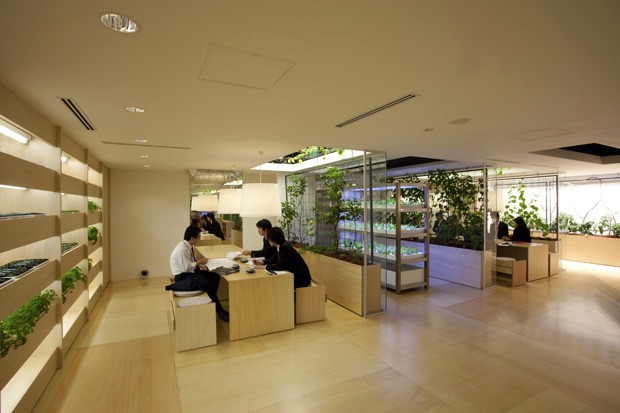
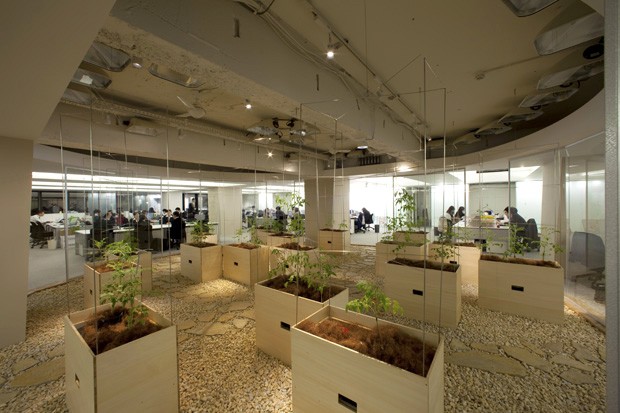
Urban Farm at Pasona Tokyo Headquarters is a nine story high, 215,000 square foot corporate office building for a Japanese recruitment company, Pasona Group, located in downtown Tokyo. It is a major renovation project consisting of a double skinned green facade, offices, an auditorium, cafeterias, a rooftop garden and most notably, urban farming facilities integrated within the building. The green space totals over 43,000 square feet with 200 species including fruits, vegetables and rice that are harvested, prepared and served at the cafeterias within the building. It is the largest and most direct farm-to-table of its kind ever realized inside an office building in Japan.
Using both hydroponic and soil based farming, crops and office workers share a common space. For example, tomato vines are suspended above conference tables, lemon and passion fruit trees are used as partitions for meeting spaces, salad leaves are grown inside seminar rooms and bean sprouts are grown under benches. The main lobby also features a rice paddy and a broccoli field. These crops are equipped with HEFL, fluorescent and LED lamps and an automatic irrigation system. An intelligent climate control monitors humidity, temperature and breeze to balance human comfort during office hours and optimize crop growth during after hours. This maximizes crop yield and annual harvests. Seasonal flowers and orange trees are planted on the balconies between the double skinned facade, partially relying on natural exterior climate to showcase changing of leaves and colors to the exterior facade. All plants are maintained and harvested by Pasona employees with the help of an agricultural specialist.
Pasona Urban Farm is beyond aesthetic and visual improvement. It creates a unique workplace environment that promotes worker’s productivity, mental health, and social interaction and engages the wider community of Tokyo by showcasing the benefits and technology of urban agriculture.

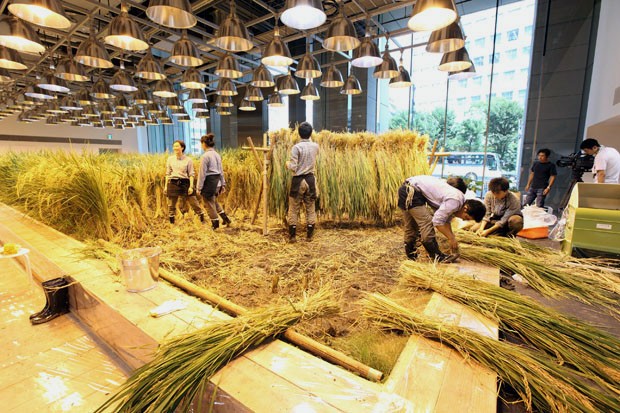

NEWS: Modular High Density Farming Using Shipping Containers on the Rise
Three Modular Urban Farming Companies to Watch:
———————————————————————————————————
Check out this video about Podponics, a company that converts shipping containers into controlled environment agriculture. They claim that one container can grow the equivalent of an acre of open field agriculture. They are not the only company on the block doing this FreightFarms and Growtainer are also in the business of modular high density farming. Modular urban farming solutions are less expensive, flexible, and scalable. Keep an eye on this growing trend.
1. A Podponics Shipping Container Farm

For those familiar with hydroponic farming techniques, PodPonics is pretty much what you’d expect. An old shipping container is retrofitted with up to five tiers of growing platforms where beds of lettuce are grown with their roots in water, not soil. Nutrients are added as needed, and banks of LED lights shine overhead. From here, PodPonics starts to innovate. They’ve added monitors for temperature, humidity, pH, and carbon dioxide levels so that these variables can be optimized for maximum growing potential. Many factors can be adjusted remotely using an iPhone interface. Their LED lights can change spectrum slightly over the course of day to stimulate different growing phases in the plants. You want the right combination of factors at the right time to produce the best lettuce. And that’s what PodPonics does for ten different leafy greens like arugula, cressida, and watercress.
Dan Backhaus was able to give more details about the startup costs of PodPonics’ production. The shipping containers they use (either 40, 48, of 53 feet long) cost between $1800 to $2800 depending on size and condition. While containers can be stacked up to 10 high, logistically it makes more sense to keep it below four for maintenance access reasons (PodPonics doesn’t stack any of their containers at the moment). This means that a 50′x10′ footprint may serve to grow ~4 acres worth of produce. That will make real estate costs feasible in most cities, though not all. PodPonics is still getting a firm idea on how much it will cost to retrofit each container once they are bought. The first pod they ever made was basically produced with materials you could find at Home Depot. Now, PodPonics is talking with companies to build partnerships for injection molded parts, more versatile (and efficient) LED lights, etc, etc. While it’s still very early to know the finalized cost of pod production, Backhaus ball-parked it near $20k. Not cheap, certainly, but well within the budgets of many cities and even non-profits looking to improve urban communities.
With their latest round of funding (again, about $725k), PodPonics is essentially making two big moves. The first is a literal relocation, moving to the Hartsfield Jackson Atlanta International Airport and constructing 16 pods. At that location PodPonics will be just two miles from the Forest Park produce terminal – the single largest distribution center for produce in the region. With 16 pods, PodPonics should be able to show that their plans are scalable and able to take advantage of any unused urban land.
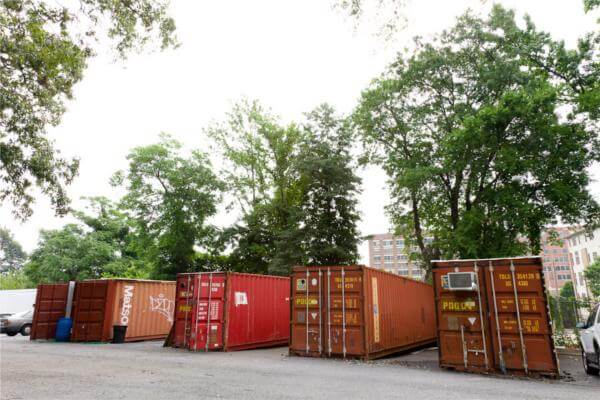
———————————————————————————————————
2. Rendering of the “Growtainer” from Green Tech Agriculture

We are developers of INVESTMENT GRADE INDOOR FARMING PROJECTS ! Controlled Environment Agriculture provides perfect measures of HVAC (heating, ventilation and air conditioning), light, CO2, water and nutrition for optimum production. Increased yield in a shorter time ! Watch the video below to see The Growtainer. This is it ! Grow anything ! Anywhere !
———————————————————————————————————
3. FreightFarms Also provide modular urban farming containers

Freight Farms produce big results for the local market.The state-of-the-art production technologies optimize the harvest cycle for any grower and puts food supply within everyone’s reach. The human centered design benefits a wide variety of users, including but not limited to; institutional foodservice providers, schools, restaurants, farmers, grocery stores, disaster relief efforts, wholesale produce distributors and developing communities. Freight Farms can be operated with minimal training and equipped with technology to optimize workflow. Users can monitor the unit remotely and control every element of the system from their mobile devices. Harvest support services are available for customers looking to maximize their growing potential.
———————————————————————————————————
Why go Modular?
When designing a system synthetically (such as an electronic machinery, a biological enzyme or a building), the system could be designed by two broad ways. The first way would be to design the complete system using the known theories, and use the system, as it is designed, in the real conditions. An alternative way would be to design the different components of the system separately, and test each component in separate conditions. Modular design, or “modularity in design”, is an approach that subdivides a system into smaller parts (modules) that can be independently created and then used in different systems to drive multiple functionalities. A modular system can be characterized by the following:
- (1) Functional partitioning into discrete scalable, reusable modules consisting of isolated, self-contained functional elements
- (2) Rigorous use of well-defined modular interfaces, including object-oriented descriptions of module functionality
- (3) Ease of change to achieve technology transparency and, to the extent possible, make use of industry standards for key interfaces.

FarmedHere has constructed a massive 90,000 sf indoor vertical...

FarmedHere has constructed a massive 90,000 sf indoor vertical farm in Chicago: Urban agriculture is here to stay!
———————————————————————————————————
We have feature FarmedHere on Agritecture before but these new images deserve another posting!
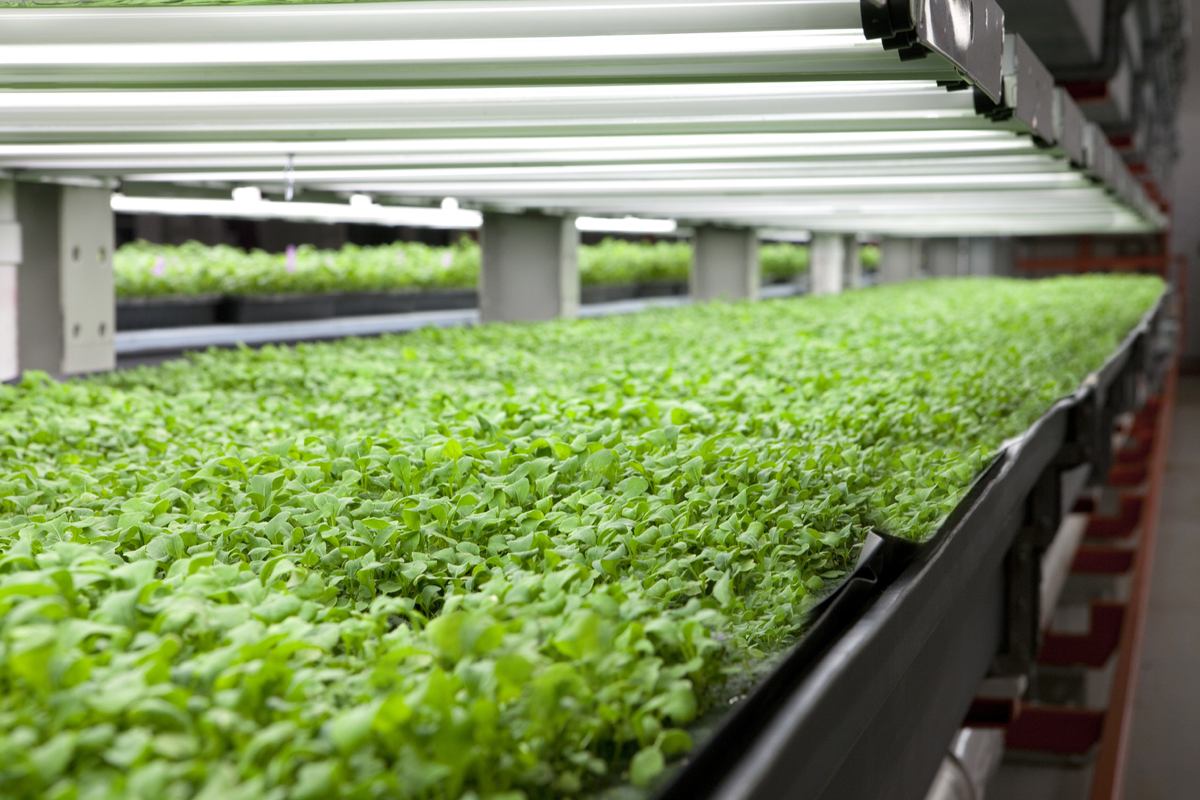
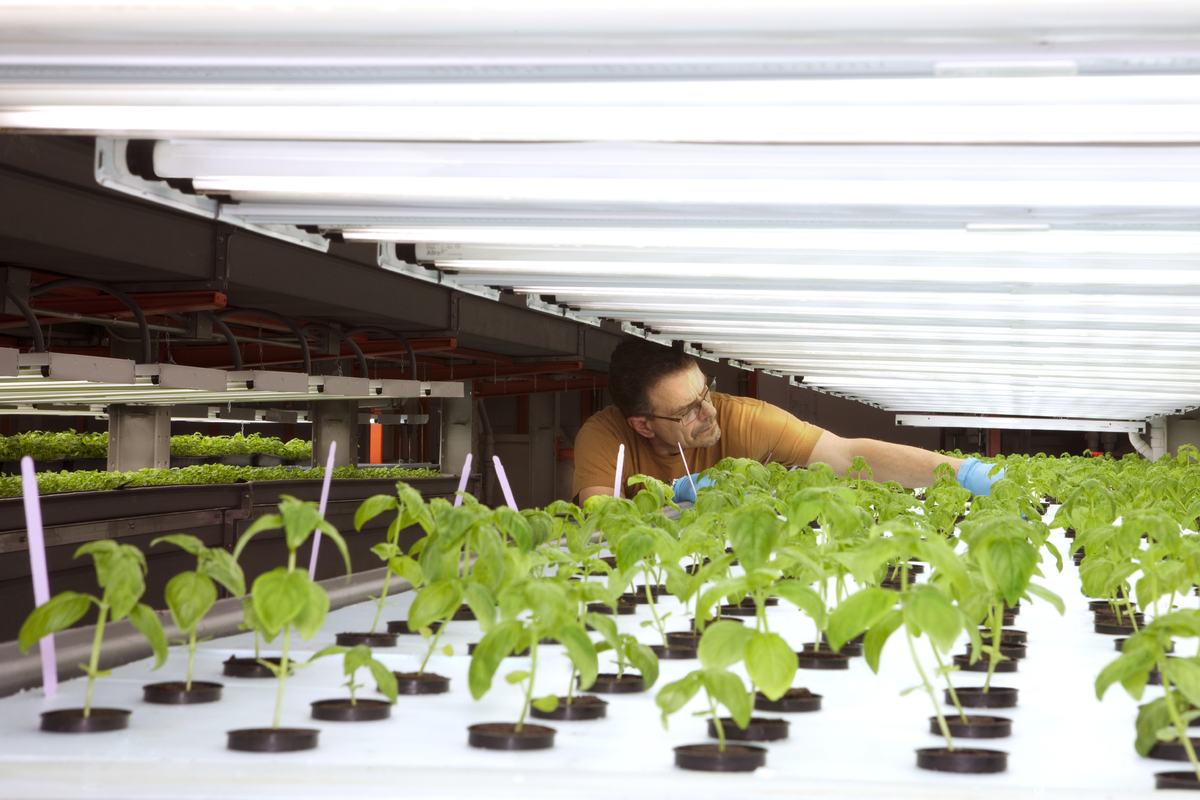
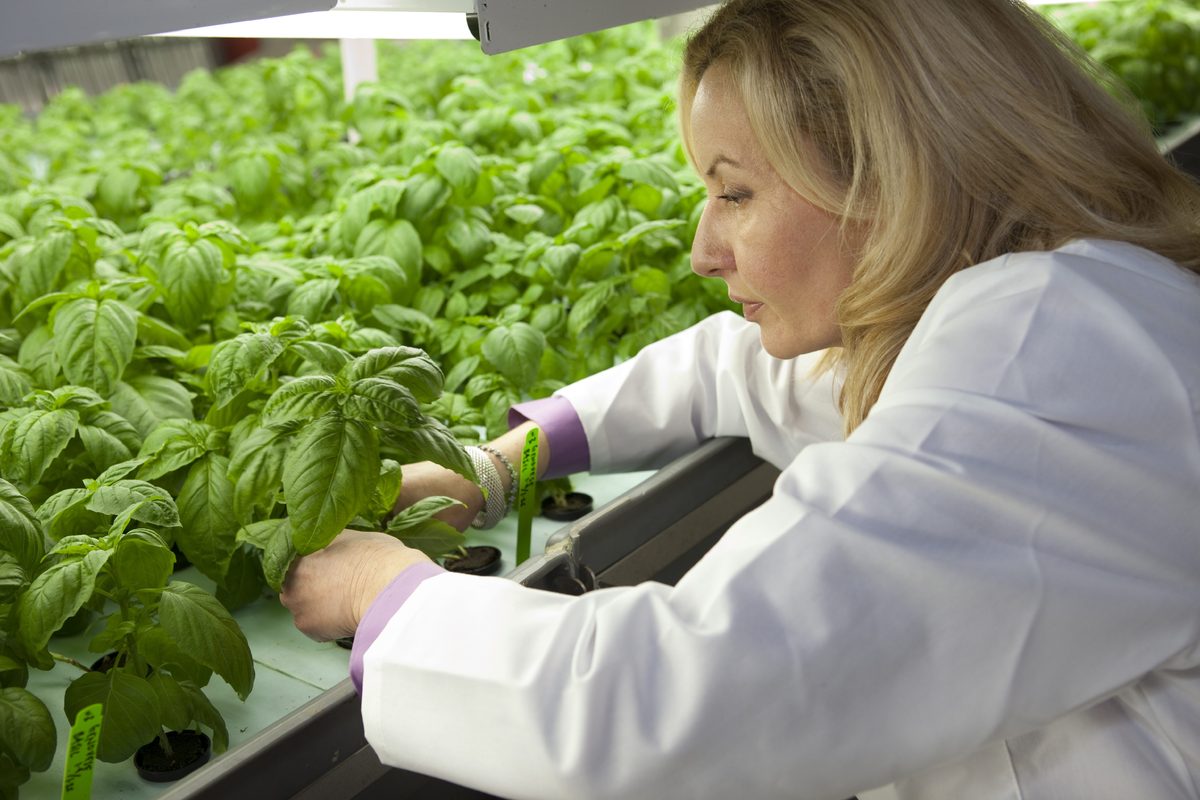
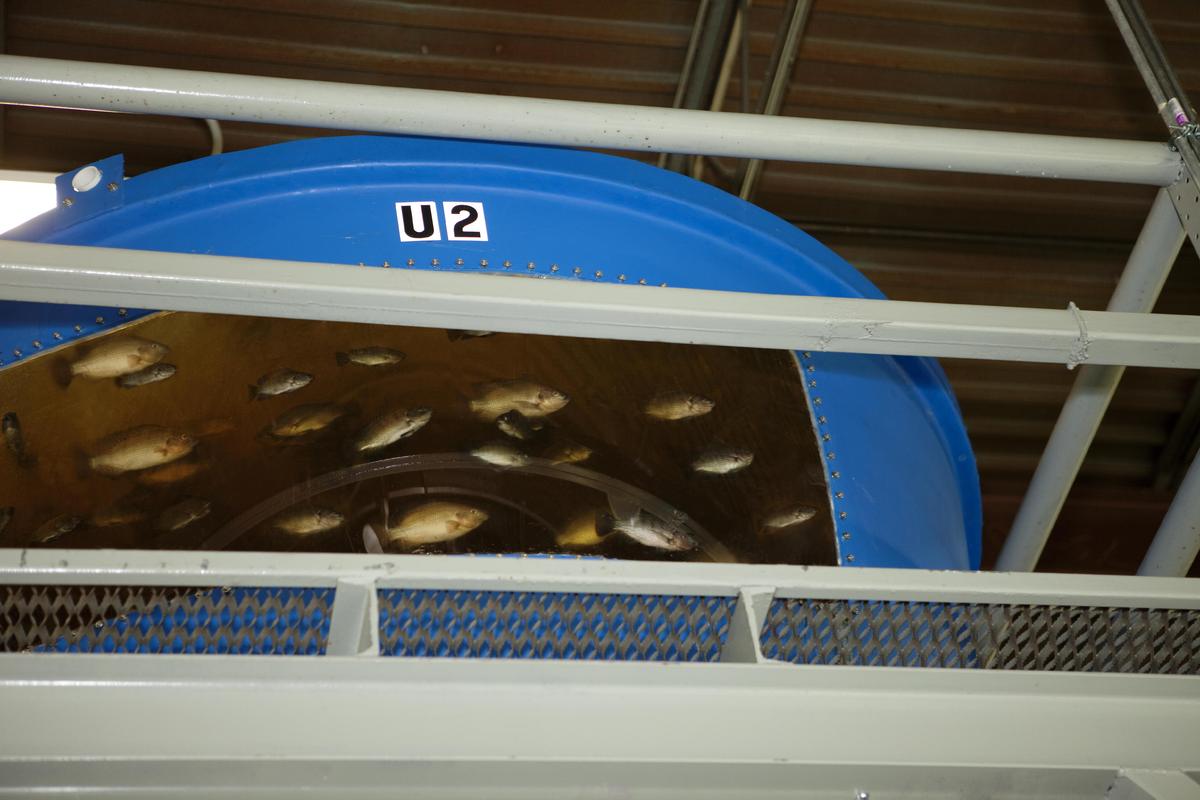
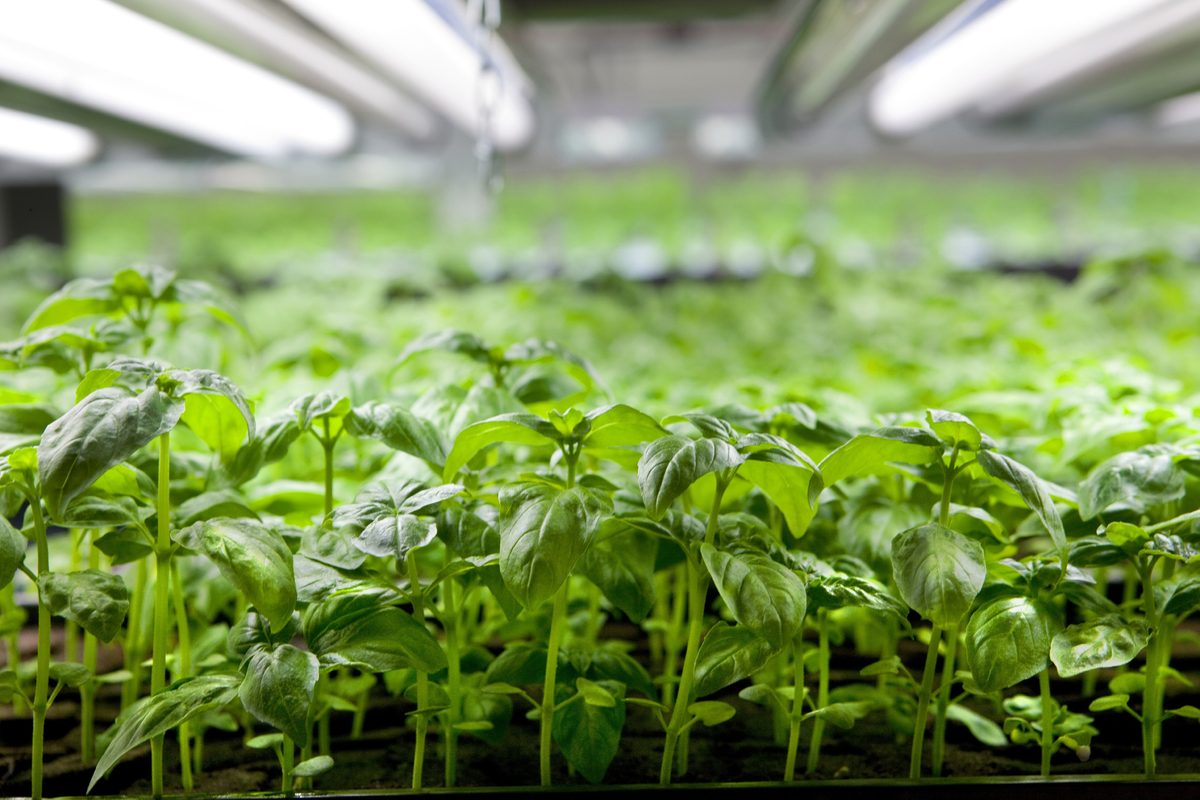
NEWS: Agreement brings ‘vertical farming factories’ to Qatar
Sorry folks, no images were available but this is still newsworthy:
Qatar’s quest for food security got a fillip yesterday with officials of South Korea’s Gyeonggi province and a local company signing a memorandum of understanding (MoU) to establish “vertical farming factories” in the country.
Khalid Ahmed Abdulah Misned, chairman of the Al-Ahmedia Trading and Contracting, signed the MoU with Gyeonggi vice governor Jae-Yul Lee in the presence of ambassador Keejong Chung and Kim Jong Chul, the president and CEO of Vegetech, a pioneer in vertical farming and other representatives from both companies at a ceremony in Doha .
After the signing, Misned said this South Korean method of agriculture was highly suitable for Qatar. “It will help grow most of the vegetables for the local market, thereby reducing the quantity of Qatar’s imports,” he said.
The Qatari entrepreneur was impressed with the vertical farming technology during his visit to South Korea last year. He believes that the technology will help in improving agricultural production in Qatar.
Highlighting some of the important details in the MoU, Misned said the project was all about importing the technology from South Korea to implement it in Qatar under Al-Ahmedia.
“We are in the process of contracting. Once we sign the contract, we expect by next winter to start the construction and set up the system,” Misned added.
Lee said the Qatar government and Gyeonggi province had earlier discussed about collaboration in research to implement this method of farming “in the oil-rich country”.
He noted that 20 such plant factories had been operating in Korea. Five are already commercialised and located at Gyeonggi province. The vice governor did not mention how many factories would be built in Qatar.
“This cutting-edge technology will help produce fresh vegetables locally,” said Lee, adding that part of knowledge transfer was to train the nationals on how to operate the plant factories.
Underlining the efficacy of the technology, Kim explained that crops grown under the vertical farming system would need less water and energy to grow. It will also require less space and even less manpower.
Lettuce, spinach and many leafy vegetables can be grown in Qatar using vertical farming and it only takes about 35 days to harvest them.
Kim expressed confidence that the technology could also cover other types of crops.
In Korea, he noted that they can produce 1,500 packs of vegetables in a day. Considering that many Koreans consume large quantities of vegetables, they are now studying the vegetable consumption of residents in Qatar and thereby trying to understand the local needs.
Earlier reports revealed that the Korean technology could combat excessive hot and humid weather through an air-conditioning system in multi-level farms.
GUEST BLOG: Architect Oscar Rodriguez Shares His Vision of Building-Integrated Agriculture for Victorian Terraced Houses in London

Oscar Rodriguez is an Architect, Building Integrated Agriculture (BIA) specialist and Founding Director of design consultancy, (Architecture and food) exploring the dialogue between food and the built environment. He explores what technical and operational synergies might arise from retrofitted and concept-stage BIA into a building’s design. Oscar has is also one of our Agritecture’s BIA Leaders.
———————————————————————————————————
BIA01 : By Oscar Rodriguez

The London Victorian terraced house is a familiar vernacular built for large middle class families and an assumption that the nuclear family would prevail. Since then they have been adapted to accommodate changing demographics and are highly prized homes recognised for their durability and flexibility while our economies rely on a centralised, fossil-fuel based energy system. BIA01 is an exercise in understanding how the form of a Victorian terraced house might be adapted to a reorientated solar energy system and an ambition to decentralise a measure of its residents’ fruit and vegetable requirements.
Assuming that the entrance is orientated to the south, the entire facade and roof is designed to harvest every photon. Where productive plants are located, users are to be granted safe and accommodating access to them in order to carry out horticultural tasks.
Where photons land on inaccessible parts of the design, a controllable mechanically hinged diffusive glass panel, embedded with photovoltaic cells, takes on this imperative while limiting direct sunlight into bedrooms during hotter month. By raking the southern facade into a series of balconies, the relationships between balcony depth, balustrade height, PV panel angle, planter depth and location, floor to floor height and safe plant tending height create a generative interfacing section.


Click “read more” to learn about BIA01, including its production capacity:
Each southern bedroom has its own dedicated balcony accessed via bi-fold doors, enabling a transition between internal/external living and maximising the user’s exposure to the sight of productive vegetation. The northern facade is also raked forming terraces inhabited by more lighthardy plants and forming a verdant valley massing cascading down to the back gardens. This is reflected on the streetscape where glass towers punctuate the architectural rhythm of the street.
Flexibility in plan is accommodated by moving the staircase to a southern corner, encasing it in glass and fusing it with the functions of a greenhouse and a stack ventilation chimney. The landings are deepened, allowing the southernmost portion to be committed to hydroponic growing along the entire vertical plane while the lightweight, perforate staircase permits the free movement of air through the volume, exploiting the height to induce natural ventilation currents.

The ground floor is open plan, unencumbered by the staircase and able to accommodate the user’s preferred layout of kitchen, living and dining sequences. The roof terrace is framed in plan by a snaking perimeter planter defining property boundaries and surrounding users with productive plants which help insulate in the winter and mitigate urban heat island effect in the summer. Rainwater harvested is stored in water tanks held in the basement where food waste may also be composted for use in the planters with any excess traded locally or committed to landscaping.

Where children may once have been ordered to go “sit on the naughty step”, now they might be told to “prune the tomato plants”. Where front porches might have been bricked off, they now host seated conversations among rosemary bushes, shaded by blackberry bushes trained on pergolas framing the entrance. Where once repairing the roof might have occupied your whole weekend, BIA01 offers the chance of a rooftop barbecue surrounded by fresh seasoning and ingredients.
The obvious barrier to entry for BIA01 is its residents’ commitment to undertaking the gardening tasks necessary to fully realise the potential of the design. These tasks are considerable in time and effort, though also considerably better spent than vegetating in front of the television with a microwave meal alone, procrastinating that crucial conversation you have planned with your noisy neighbour when a simple invitation to cooperate over a tomato harvest might have broken the ice.
BIA01 offers a redefined sequence of priorities for how a dwelling might respond to its context from which a series of variants will follow. These new priorities address fears over our food system, our obsession with brute force technologies to counter climatic discomfort and challenge the prevailing decline in communitarian spirit by enabling an activity relevant to everyone.
BIA01 : PRODUCTION CONSIDERATIONS
BIA01, in its current design, offers 40sqm of soil based cultivation in self-watering planters. At a range of 2-10kg/sqm/annum, 80-400kg of produce could be expected depending on the choice of cultivar and the skill of the farmer. A further 3sqm is offered in full height hydroponic cultivation on the staircase landings which could conservatively yield at a range of 30-50kg/sqm/annum a further 90-150kg of produce per year. The blackberry bushes at the entrance would yield a further unknown weight of fruit. In total it could be comfortably predicted that BIA01 might yield anything between 170-550kg of produce per year.
At a conservative price per kg rate of £8/kg for high quality organic produce, picked at the optimal time for flavour and nutritional content, BIA01 could offer its residents between £1,360 to £4,400 per year in produce. Mark Ridsmill Smith, founder of Vertical Veg, set himself the task of producing £500 worth of produce in 2010 on his 6’x9’ (5sqm) balcony and window sills, imaginatively using the horizontal and vertical plane and harvesting every available photon. Recording the weight and type of produce harvested starting from 1st May 2010, he reached his target by September 2010. After 12 months he had produced 83.66kg valued at £899.99 (averaging £10.75/kg).
If 5sqm could produce £900 worth of produce it follows that each square meter might offer £180. At 40sqm of equivalent cultivation, a farmer as skilled as Mark may be able to produce up to £7,200 worth of produce a year. Together with the hydroponic cultivation, the blackberry bushes and further design optimisation, that figure may conceivably approach £10,000 per year which would translate to 1000kgs worth, enough to offer 5 residents 200kg of fresh produce a year equivalent to 540g per day.
Averages offer a very basic idea of potential as the choice of cultivar, their sequencing and storage strategies ultimately determine whether produce can be delivered to meet requirements. They are
offered as a starting point to incentivise further exploration.
———————————————————————————————————
All images courtesy of Architecture and Food. More images in high res and infographics not included in this post can be found in the “Agritecture Tomorrow” image gallery.
Are you interested in submitting a guest blog for AGRITECTURE? Contact us with your take on Building-Integrated Agriculture and we will do our best to feature your ideas.
NEWS: Vertical Designs plans to build "Plant Science Hub" in Squamish, British Columbia, Canada

Nick Brusatore, CEO of Vertical Designs Ltd. has made an agreement with Rendavi Developments to develop 6.5 acres in Squamish, BC into a vertical farming facility named the “Plant Science Hub”. The farm is estimated to grow 10 times more produce than open field agriculture does (a yield multiplier that we have tested and is both robust and modest). Nick Brusatore, who used to be part of Terrasphere is a pioneer in the vertical farming industry. This will surely be a project to watch.
A company exploring the next generation of farming technology plans to make Squamish its new home.
Vertical Designs Ltd. (VDL) and Rendavi Developments Ltd. have an agreement to purchase 6.5 acres of Squamish land at an undisclosed location to build one of North America’s largest vertical farming facilities.
“We are excited,” Nick Brusatore, VDL’s CEO and technology designer, told The Chief, noting initially it could add 20 new jobs to the community’s labour pool. “We want to create something that is going to bring a lot of attention to [Squamish].”
The “plant science hub” would be comprised of two buildings — one specializing in vegetables and the other focusing on medical marijuana, Brusatore said, who also heads pharmaceutical company Abattis Bioceuticals Corp.
The new facility is set to be filled with tiered crop growing systems, with regulated air temperature and lit with energy-efficient light bulbs. Vertical growing can not only cut out the need for pesticides, but it also saves hundreds of litres of water, Brusatore said. Soil isn’t required for the process. Plants’ roots are immersed in water containing mineral nutrient solutions.
“Everything is locally grown in Squamish throughout 12 months of the year,” Brusatore said. “Not only that, we are creating jobs both in an entry-level capacity, as well as in research and development.”
Vertical farming is a rapidly growing industry, he noted. It’s quickly becoming one of the cleanest and quickest ways to generate greens, Brusatore added. Once up and running, Brusatore expects the facility to grow approximately 10 times more produce per square foot than greenhouse productions.
VDL has inked licensing agreements for similar projects with Ontario and Alberta, in the Atlantic region and Minnesota. The plans are on hold until the proposed Squamish facility proves to be profitable, Brusatore said. With the company’s anticipated growth, Brusatore said down the road VDL could employ approximately 60 people.
“I can turn Squamish into a major production hub with a tonne of jobs,” he said.
The proposal should be on the District of Squamish’s table by the end of May. Financing for the project could be secured as early as October, with construction beginning in January of 2014.
Brusatore has worked in the industry since 2000. He serves on the science advisory board for BG Medical Technologies — an organization that brought him aboard to advise and guide developing solutions for natural medicinal production of marijuana.
The Benefits of Urban Agriculture: An infographic from...


The Benefits of Urban Agriculture: An infographic from Sustainable Cities Collective.
Well executed Urban Agriculture infographics:


Video of Brooklyn Grange, Long Island City, Queens, NYC
NEWS: Gowanus Whole Foods Will Have 20,000 Square Foot Rooftop Farm

The urban farming scene is really ramping up and Whole Foods is getting in on the action! The company announced today a partnership with Gotham Greens to build a new rooftop farm on top of their forthcoming Gowanus location. The partnership will produce the “nation’s first commercial scale greenhouse farm integrated within a retain grocery space.”
The 20,000 square foot farm would produce pesticide-free produce atop the grocer and would provide veggies not only for the Gowanus location but also for other Whole Foods throughout the city. The farm will also operate year-round and use efficient energy and water delivery systems, including an advanced irrigation system that uses 20 times less water than typical farms and lots of solar panels. GrubStreet got word that the farm will grow a variety of lettuces, herbs and other leafy greens like kale, plus tomatoes and other vegetables throughout the year.
Add this farm to the massive Brooklyn Grange and it’s easy to see a future with farms on every roof! In some cases, that’s probably better than growing anything in the ground.
Windowfarms are at it again! Founder Britta Riley gives a tour...
Windowfarms are at it again! Founder Britta Riley gives a tour of the Windowfarm food garden at the American Museum of Natural History in New York City. Windowfarms was commissioned to build two large arrays of Windowfarms at the museum in conjunction with the globe-traveling special exhibition on Food, “Our Global Kitchen: Food, Culture, Nature”. The LED grow light powered hydroponic research garden is on view for 10 months at the Columbus and 79th street entrance November 2012- August 2013.

Britta Riley grew up in rural southeast Texas, where locals with a mastery of gardening subsisted on their land. “They really turned me on to the idea of growing my own food,” Riley says. With the help of an open-source community, Riley now has her own productive plot — a 20-by-30-foot vertical garden hanging in a glass pavilion at New York City’s American Museum of Natural History — and a start-up to put similar farms in windows around the world.
After Riley moved to Brooklyn, New York, in 2003, she grew potted vegetables in her dimly lit apartment. The results were far from successful. Her plants strained for light on a confined windowsill, and they poured their energy into growing expansive root systems instead of lush, edible greens. A rooftop garden, meanwhile, exposed her crops to the Northeast’s finicky weather. Riley thought using the entire vertical, sun-soaked space of a window — not just the sill — could grow more and healthier vegetables. Stringing planters together seemed like the answer.
To keep her tiny vertical farm lightweight and encourage leafy growth, Riley tried hydroponics. The method forgoes heavy soil for a circulating liquid solution enriched with nutrients (see above image). Suppliers catered only to big operations, so in 2009, Riley cobbled together a prototype from plastic bottles, a water pump, and a bucket. The pump drew fluid from the bucket through a tube and into the top planter; the fluid trickled down from planter to planter and collected in the bucket. It worked, if inelegantly; Riley grew a salad’s worth of greens per week.
Neither an expert in agriculture nor in hydroponics, Riley launched an online forum, called Windowfarms, to crowdsource advice for her design. Users flocked to the site and, over the years, developed and tested more than a dozen different configurations before sharing their biggest breakthrough: an aquarium airlift pump. Instead of noisily sucking a column of liquid through tubing, the pump quietly lifts slugs of fluid atop bubbles of air.
In 2011, Riley launched a Kickstarter campaign to produce a consumer-ready hydroponics kit for about $179. The project raised $257,307—more than five times her goal. Riley says the kit helps people who aren’t keen on building their own window-farming system from scratch get started. Meanwhile, the Windowfarm community continues to tweak designs and share tips. The simplest community-developed model (Version 2.0) can be built in an hour for about $30.
Riley’s next project is to collect the wisdom of her 38,000 users and build a searchable database of urban hydroponic farming knowledge. “We’re not just building more farms but more farmers,” Riley says. “That’s how you make agriculture smarter.”






